Hackworth Family Archive
- Made:
- 1810-1980
- maker:
- Hackworth, Timothy





































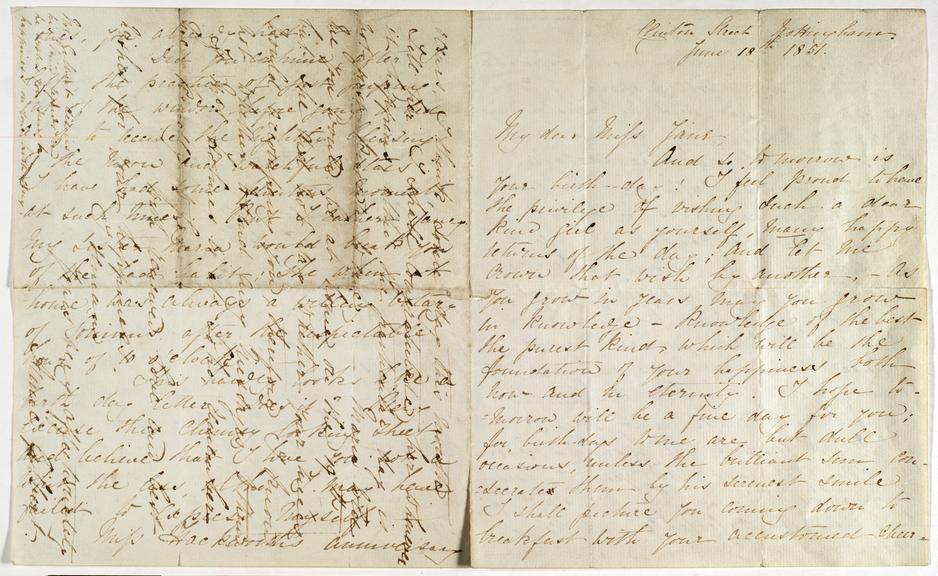










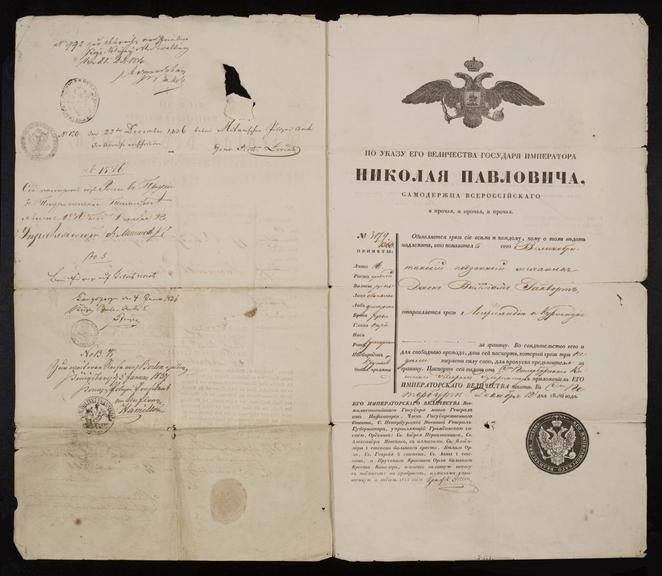
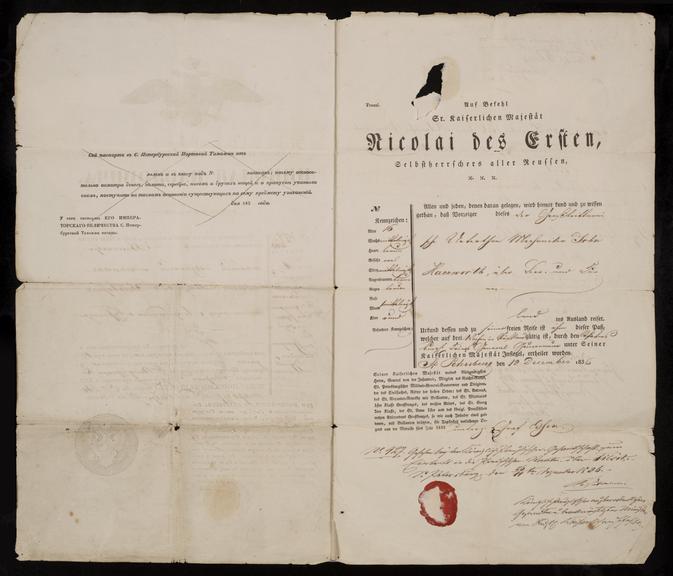




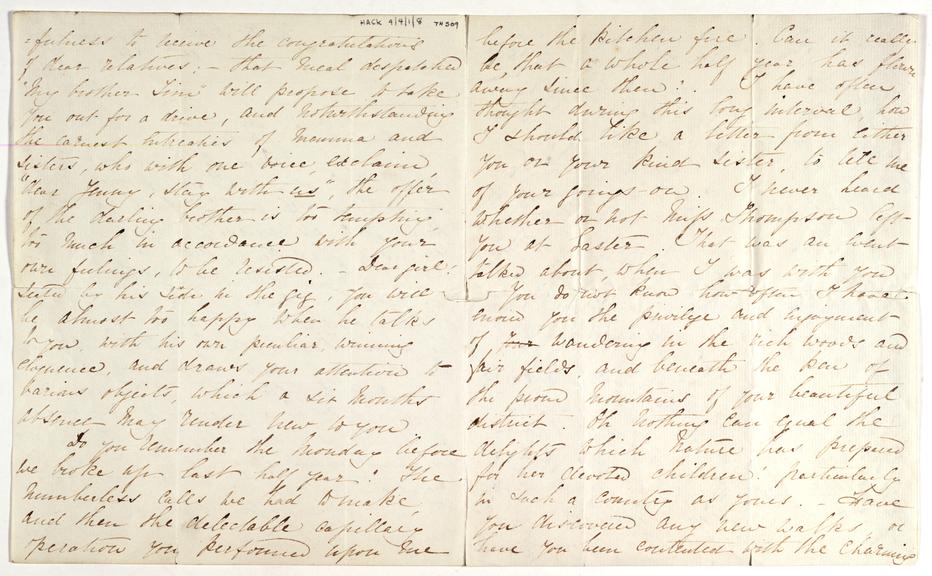







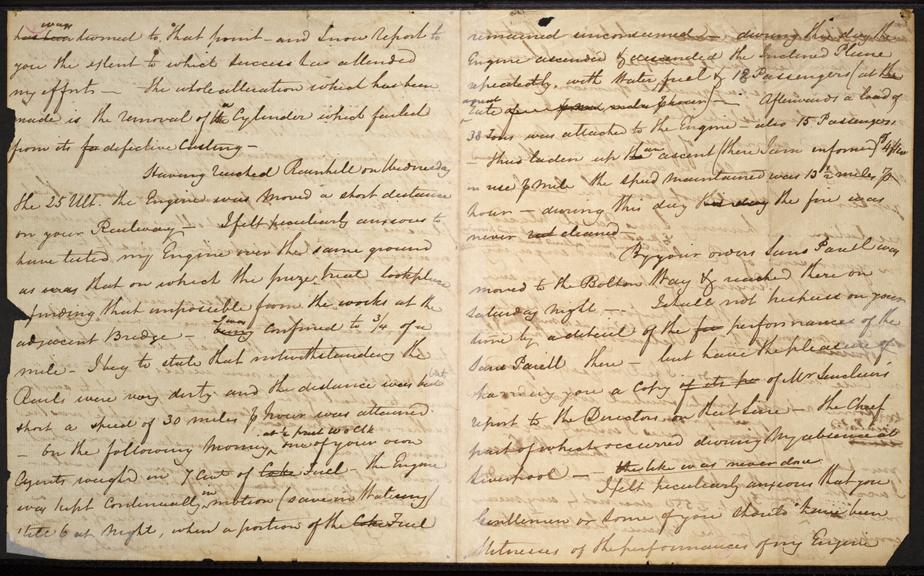










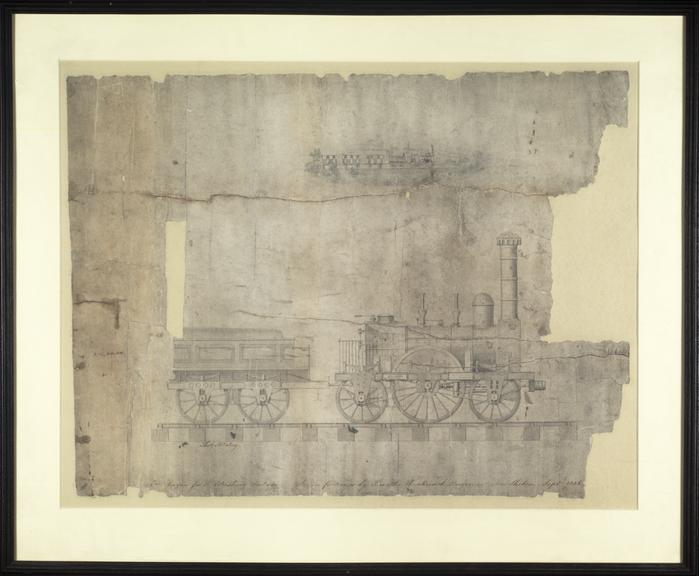
The Hackworth family archive is a record of early railway development in Britain. It contains records of Timothy Hackworth’s (1786-1850) work with the Stockton and Darlington Railway Company and features original documents to and from prominent railway individuals such as George and Robert Stephenson and Edward and Joseph Pease. It describes business activities and events on the line and discusses developments of railway engineering and travel that enabled the railways of today. Business records such as ledgers, notebooks and drawings provide detailed information about locomotives built; records also document business activities, such as the passport of John Wesley Hackworth from when he delivered the first locomotive to Russia (HACK/1/3/5). There is also a large amount of correspondence between various individuals regarding Soho Works’ order for the London and Brighton Railway Company. Correspondence between the members of the family describes the early railway industry informally; Timothy Hackworth appears to regularly correspond with his children in a personal and business capacity and writes to his wife regularly when he is away from home. Timothy Hackworth’s correspondence with his wife and two sons describe his feelings about how his business and railway developments at the time. Letters are also heavily tinged with religious references and are evidence of the family’s Methodist faith and describe every day events.
The archive contains a large amount of family records from after the death of Timothy Hackworth. There are hundreds of papers regarding the settling of his estate gathered by his friend and executor of his estate Thomas Greener (HACK/2/1). These show how the family administered the estate and, dealt with running Soho Works without their father and their various decisions to sell the business. Papers also deal with private matters such as the mental health of Timothy Hackworth’s eldest daughter Ann Ambler who was put into a mental asylum and the family’s attempts communicate with her husband William Amber. The mental health of another sister Mary Hackworth is also discussed, along with the threat of her marrying an unsuitable husband as the estate was being settled. Thomas Greener filed personal letters alongside estate papers; the series includes letters regarding the death of Timothy Hackworth’s wife Jane, letters announcing marriages, illness of his son Timothy Hackworth and often express money troubles within the family. Disagreements between family members are played out, notably between the two sons John Wesley and Timothy who both attempt to buy the business. At another point John Wesley Hackworth attempts to bring legal action on his brother and another executor.
Letters between the children of Timothy Hackworth and also their friends give an insight into what life was in Victorian times (HACK/4). Letters between women and girls are an example of this; Timothy Hackworth’s daughter Prudence Nightingale (nee Hackworth)’s correspondence with her friend Elizabeth Dove describes family matters and the death of many people in her family of tuberculosis. Correspondence accumulated by younger daughter Jane Young (nee Hackworth) describes her time at school in Vilvorde, Belgium. Letters describe the family’s opinions regarding the observation of the Sabbath; provide gossip about family and friends and on potential suitors and describe Victorian fashion. There are numerous items in the archive that are evidence of social and religious history for example proposals of marriage, letters turning down marriage, religious confessions and letters of condolence on the death of family members.
The archive has another dimension to it: many of Timothy Hackworth’s children, grandchildren ancestors and friends campaigned for their ancestor’s recognition and their records are also contained in the archive (HACK/6). Hackworth’s daughters, their husbands and friend Thomas Greener collected, wrote and distributed literature about him. John Wesley Hackworth’s research papers and his correspondence in papers demonstrate his eagerness that his fathers name must not be forgotten (HACK/3). He publically battled against people who he thought were promoting historically inaccurate notions in relation to who was involved with early railway development. He focused on the argument that his father had invented the ‘blast pipe’ which the Stephenson’s used in order to make their locomotives successful. Later letters between Robert Young and various correspondents provide different points of views on the effectiveness of John Wesley Hackworth’s work to promote his father (HACK/5). Some correspondents such as, Timothy Hackworth’s nephew ardently defend John Wesley’s work and views, whereas others such as Robert Young Pickering, cousin of Robert Young are very critical of the way that John Wesley ‘damaged’ any chance that of making Timothy Hackworth’s name prominent.
Research for Robert Young’s book Timothy Hackworth and the Locomotive (London: Locomotive Publishing Company, 1923), gathered by Robert Young provides an in depth into the history surrounding the dawn of the locomotive in Britain (HACK/5/2). Both his and John Wesley Hackworth’s research (HACK/3/3), which he also used, provide a great deal of first and second hand information and evidence regarding the history of railways. Young researches through published sources, correspondence with people who were alive at the time of Timothy Hackworth including members of the family, photographs, magazines. Robert Young and his cousin Samuel Holmes, who lived in the United States, corresponded in depth about what should go into Robert Young’s book. Samuel Holmes tended to follow John Wesley Hackworth’s style of debate whilst Robert Young wanted to avoid the book offending the public and to create a more impartial account of events. Samuel Holmes wrote a forward to the Robert Young’s book however he died before the book was completed and it was never included in the final publication. There are various heated letters between Samuel Holmes and Robert Young that debate Timothy Hackworth’s involvement in railway history.
Later letters in the series document arrangements for parts of this archive and other Hackworth artefacts to be exhibited by the Baltimore and Ohio Railroad Company in the World Columbian Exposition, or ‘World Fair’ held in 1893 (HACK/6/2-3). Letters sent between members of the family describe current events at the time of writing such as the Boer War and the World War I. Letters from family members now and again describe the family’s bad luck and often describe sorrow due to death and illness in the family. Later letters deal with what should happen with the family archive after members of the family have died and demonstrate further attempts to publicise Timothy Hackworth.
Details
- Extent:
-
27 boxes
- Identifier:
- HACK
- Access:
- Access is given in accordance with the NRM access policy. Material from this archive is available to researchers through Search Engine.
- System of Arrangement:
-
More
The archive has been arranged into sub fonds that represent how individuals gathered material; e.g. all letters they received, letters they wrote and never sent, papers written by them, publications gathered by them etc. It has not been possible to ascertain the owner or gatherer of some printed material and images, therefore these have been classed under separate sub fonds. Where appropriate married couples have been described together, this is where material has been gathered by both individuals, letters have been addressed to both parties and so on. Some couples have been split into two series when their activities are deemed separate.
- copyright:
-
More
Copies may be supplied of items in the archive, provided that the copying process used does not damage the item or is not detrimental to its preservation. Copies will be supplied in accordance with the NRM’s terms and conditions for the supply and reproduction of copies, and the provisions of any relevant copyright legislation.